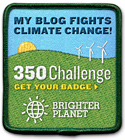Green Livin We’ve all heard the “Disposable Diaper VS Cloth Diaper” debate, and the pros and cons of each are pretty obvious. Parents want the convenience of the disposable without the guilt of knowing that they are throwing thousands of diapers in a landfill that will take approximately 500 years to decompose. This means that your great, great, great, grandchildren will one day be up to their necks in “diaper duty” thanks to our generation’s need for convenience. To make matters worse, most disposable diapers are created with chemicals known to be toxic which can be irritating to a baby’s skin and pollutes the soil when discarded. So…what are our options?
gDiapers are a revolution––a flushable diaper system that is good for babies, parents and the planet. gDiapers put human waste where it belongs, in the toilet. gDiapers have no elemental chlorine no perfumes, no smell, no garbage and no guilt. gDiapers are designed keep babies comfortable and the Earth a little happier. gDiaper flushables with super absorber keep bottoms feeling dry. Washable ‘little g’ pants, with snap in liners, are made of water resistant breathable material to keep wetness away. Starter kits contain 2 washable pants, 10 flushables, and 1 swishstick for $24.99. Refill packs are $13.99 and contain 40 small flushables or 32 medium/large flushables.
Disposable diapers, with eighteen to twenty to twenty billion thrown away each year, are the third largest contributor to landfills. The plastic contained in these diapers takes up to 500 years to decompose. Additionally, most of these diapers also contain untreated human waste that can leach into the water table.
What are gDiapers and how do they work?
gDiapers are a unique and distinctive diaper option that keeps babies dry andcomfortable and are radically better for the environment. The design consists of astylish, washable outer pant and an ultra-absorbent inner pad – a flushable. Parentssimply keep a ready supply of flushables on hand, similar to the convenience ofdisposables. When ready to dispose of the flushable, parents tear along theperforation, stir (using the gDiapers provided Swishstick) and flush. There is nosmell, no mess and no garbage, no guilt.
Why is flushing good?
When you flush the flushable it enters the waste stream and ends up at awastewater facility, where the sludge, or what’s been flushed, goes through anumber of processes to remove pathogens and odors. The ultimate goal is tomake Biosolids that are often used as soil re-conditioners. As sludge is 90%water, in the process, “de-watering” needs to take place before the Biosolids canbe dried and made into dried pellets. To achieve this, many wastewater facilitiesuse a polymer with the very same qualities of the SAP found in our flushables.That is, they can hold 100 times their weight in water, which is great for keepingbabies skin dry but just as good for removing water from sludge. Further more,in drought stricken countries like Australia, wastewater facilities add extra superabsorber so that the Biosolids they make can hold more water.
Why do I need to tear the flushable?
To allow all the contents of the flushable to fall into the toilet bowl. The contentsinclude fluff pulp and super absorber. If super absorber gets trapped in the pouchit may clog your toilet. Super absorber holds 100 times its weight in fluid – greatfor keeping babies dry. But to flush, the contents need to be set free from thepouch, stirred, then flushed.
What are flushables made of?
lushables are made of an outer material that is designed to go down the toiletand is compostable. The outer fabric has a stay dry feel, which is soft againstyour baby’s bottom. The contents are made up of elemental-chlorine-free,farmed tree fluff pulpand super absorber. That's it!
Do flushables biodegrade?
In our own research - where we buried the flushable in soil, it biodegraded nicely,thank you very much. But in the commercial world, no diaper manufacturer canactually claim biodegradability as nothing, and we mean nothing biodegrades inlandfill – where diapers end up. Landfills are airless environments that hampe
Co-founders: Jason and Kimberly Graham-Nye. While living in beautiful Sydney, Australia, Kim and Jason felt very fortunate to discover a Tasmanian company that made flushable diapers. So they brought the concept to America and named it gDiapers.
Diaper/environmental facts
Diapers are the third largest contributor to landfills, World Watch Institute Good Stuff Guide
It takes up to 500 years for these tons of disposable diapers to biodegrade, The Insider’slGuide to Natural Health, www.whatreallyworks.co.uk
90% of Americans use disposable diapers, Lehrburger, Mullen, Jones. Diapers:
Environmental Impacts and Lifecycle Analysis. January 1991
*most parenting websites estimate this number has reached 95 percent in recent years
Environmental Impacts and Lifecycle Analysis. January 1991
*most parenting websites estimate this number has reached 95 percent in recent years
The average child is diapered 5,000 times before being toilet trained, University of Minnesota, Extension Service, 1999.
www.gdiapers.com
for a happy planet
for a happy planet



No comments:
Post a Comment